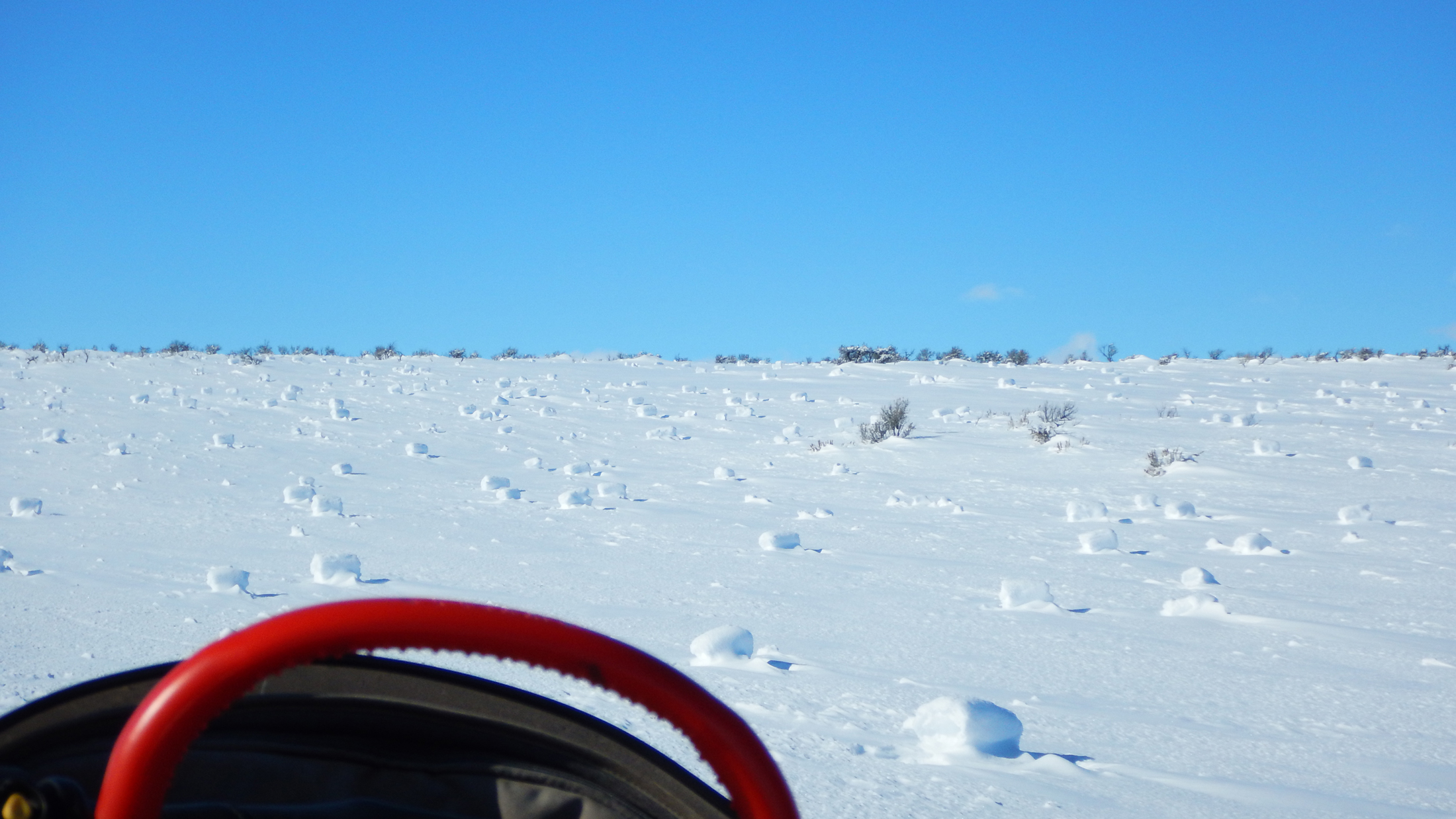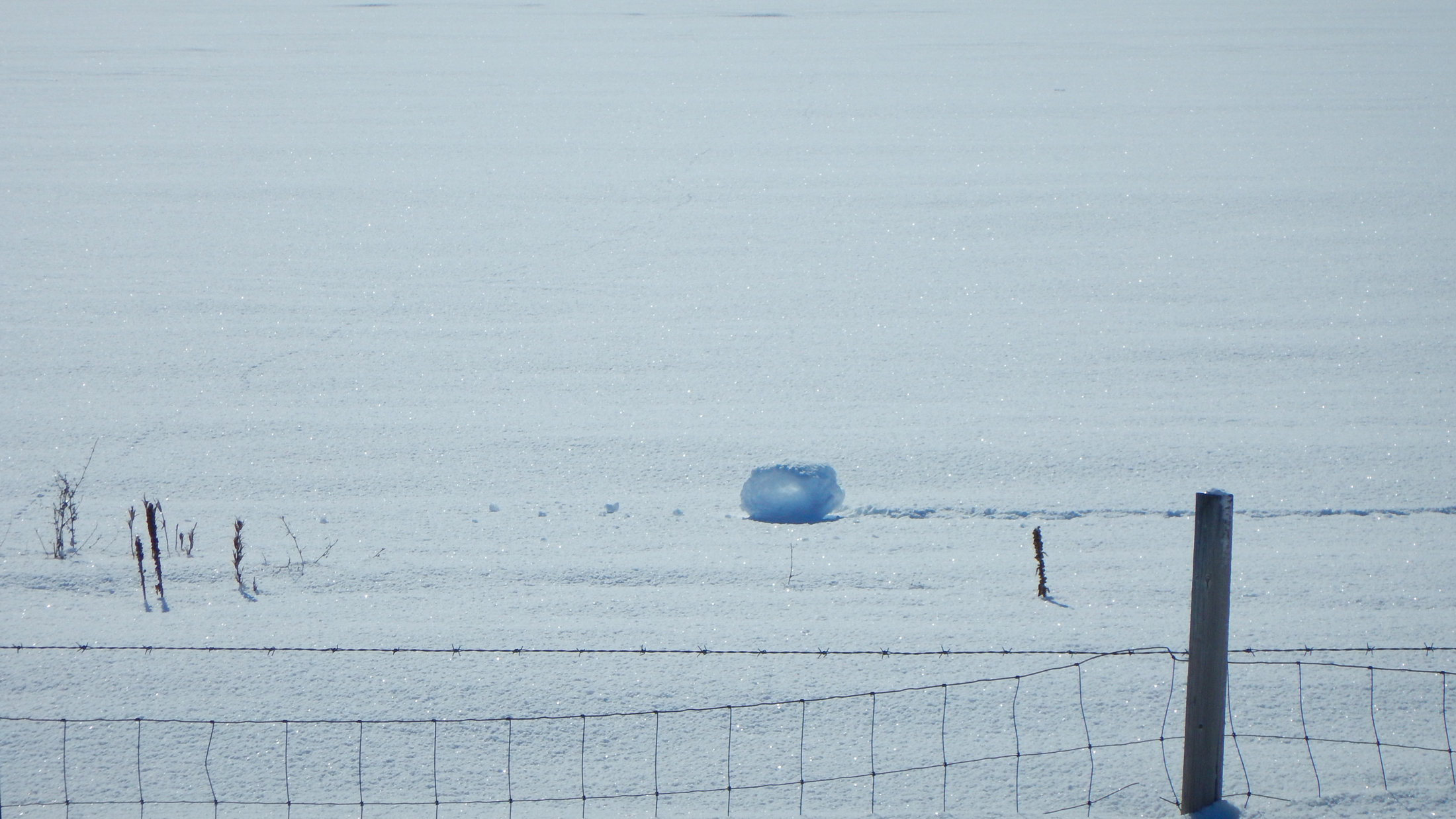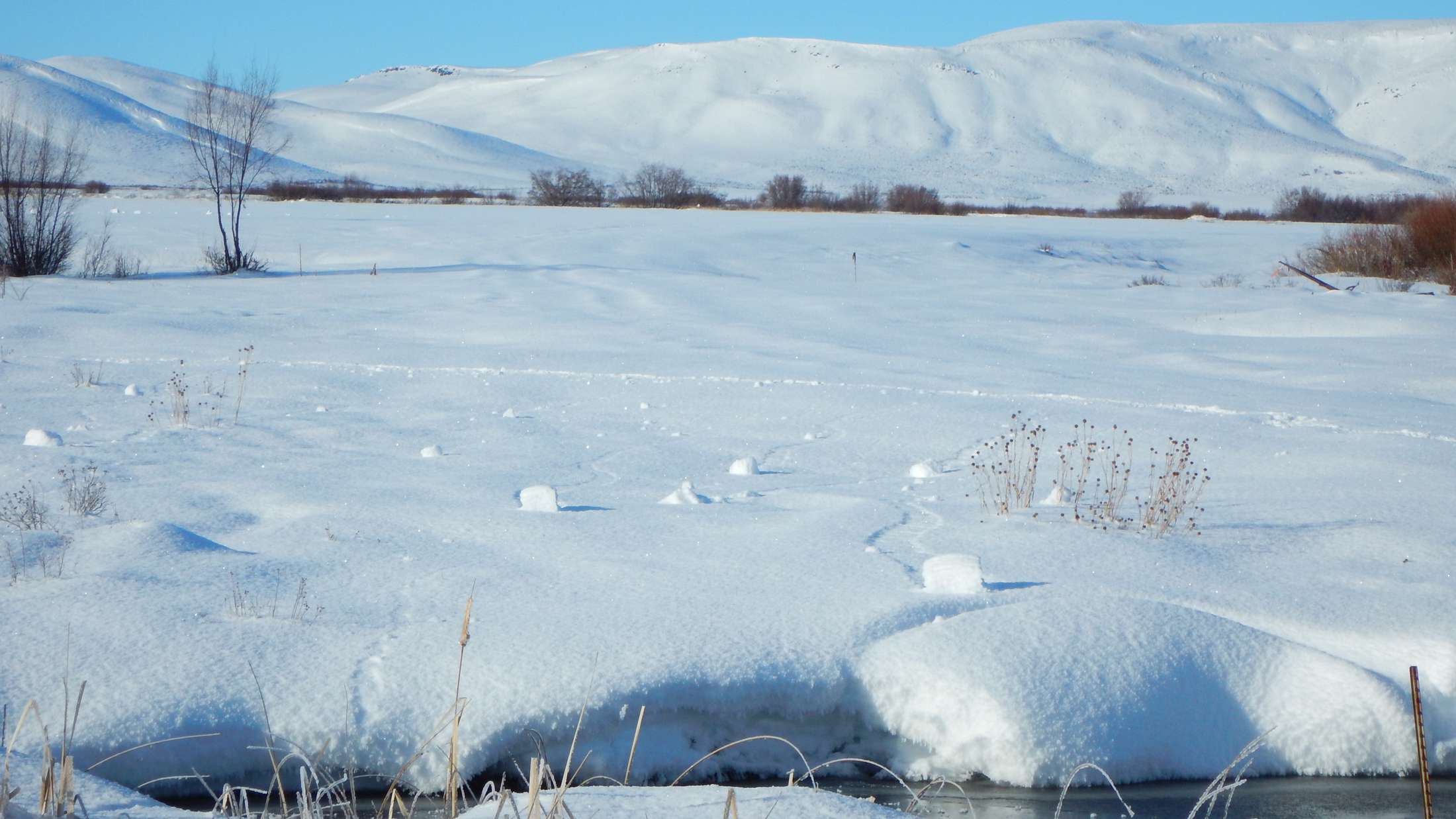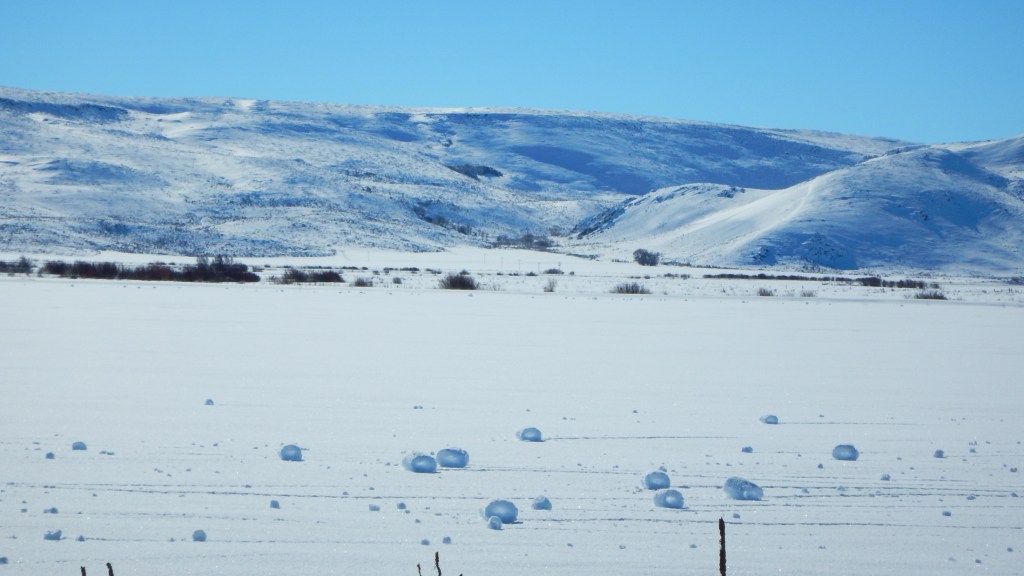In the morning, the fields looked like an ambitious busload of kids had rolled snowballs all night long. Those snowballs stretched out across the landscape, seemingly ready to be assembled into snowmen. But they were not the work of human hands.
They formed by a perfect combination of wind and weather: spontaneous snowball creation.
“Snow rollers” – as these formations are called – are a meteorological phenomenon rarely reported across the country. In this case, the fields were located in and around The Nature Conservancy’s Silver Creek Preserve in south-central Idaho.
Sunny Healey, the preserve’s manager, recently headed out from her office to change equipment at an erosion project. There had been a snowstorm the previous night, but at first she didn’t realize what she was seeing.
“I thought they were trumpeter swans, which are regularly seen on the preserve during the winter,” Healey says. “As I got closer, I realized the fields were filled with snowballs. You could even see the roll marks.”

Because they form rarely and unpredictably, snow rollers are poorly understood. According to NOAA and the National Weather Service, they need a perfect set of conditions to form. First, you need a hard, crusty base layer of snow – so the new snowfall does not stick. The new snow needs to be wet, but not so heavy that it can’t be pushed. Then heavy winds push clumps of snow, which begin rolling along and gathering snow – just like when you build a snowman.
These exact conditions occurred in the Silver Creek area last week. “It was relatively warm for this area, around 32 degrees, so the snow was mixed with some sleet,” Healey says. “And that was followed by extremely heavy winds. I woke up in the night and could hear the wind howling.”

These snow rollers were about 18 inches high. In some cases they have reportedly been as big as cars. According to meteorologists, they are often cylindrical and, unlike the snowballs you roll, not very compacted in the middle (they are often even hollow).
In any case, snow rollers make for a striking sight in fields. Their roll marks call to mind the mysterious “roving rocks” of the Mojave Desert.
Healey, who lives on the preserve, had never seen them but says ranchers say they happen every 20 years or so. But she’s used to being surprised by the preserve. A unique high desert spring creek, Silver Creek is a constant parade of biological wonders – whether it’s huge trout munching on unlucky rodents, or rare birds stopping by, or bull elk bugling in the fall.

The preserve, celebrating its fortieth anniversary this year, is internationally known as a fly fishing and birding destination. In the summer, thousands visit the postcard-perfect setting, drawn by one of the largest trout populations in the world. But the preserve is just as magical in the winter, especially with snow rollers.
“Silver Creek is beautiful in all four seasons,” says Healey. “As a spring creek, it flows year round, but when it gets cold much of it still freezes over. The open water is full of ducks and geese and swans. There are moose grazing along the bank. It’s really magical. And this year, we have an army of snowballs keeping watch.”




I am elated to see Sunny Healey’s photos of the snowrollers. They are unbelievable. Their fleeting nature sometimes defies their proof of existence. Sunny and your colleagues ‘ explanatioins of thier formation are almost exactly as what I have described in my article “Snowrollers” , in Weatherwise, December 1982, Volumne 35, Number 36, p 276- 277
I would be happy to send you and Sunny a copy of the paper.
Francis M. Tam, Professor Emeritus of Physics and Engineering, Frostburg State University,
Frostburg, MD 21532
Where exactly did it take place, like country, city, and state.
Hi Marina, The preserve is in Bellevue, Idaho. You can get directions here: http://www.nature.org/ourinitiatives/regions/northamerica/unitedstates/idaho/placesweprotect/silver-creek-preserve.xml
The “mysteries of nature” are always a surprise to the majority of us. I would’ve never known…
Wow, that’s really cool. I learned something new today. Thanks Matt!
Love this story! Thanks for sharing the wintry phenomenon with us!
Beautiful. The wonders of nature never lets me down.